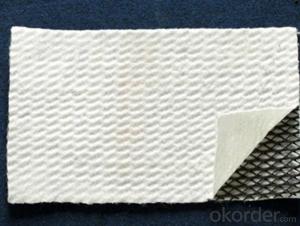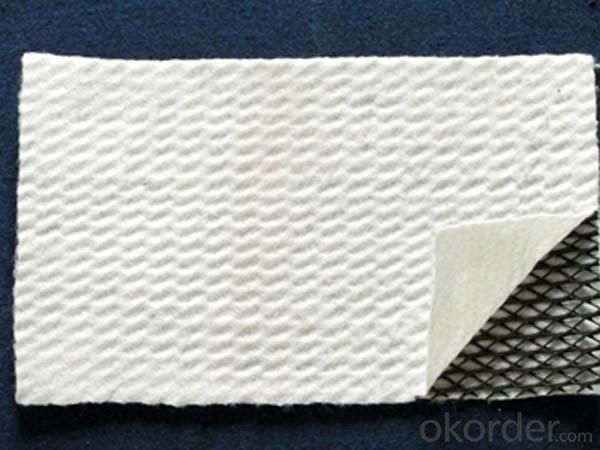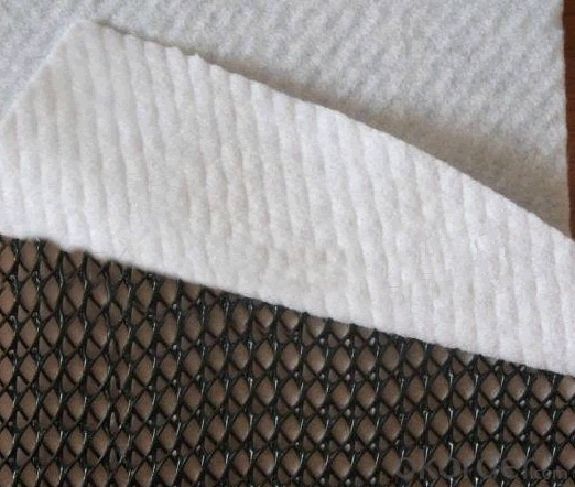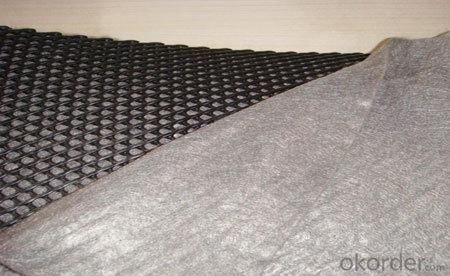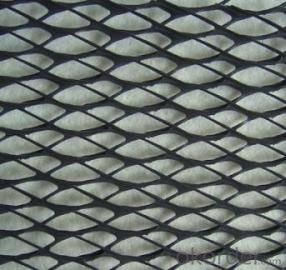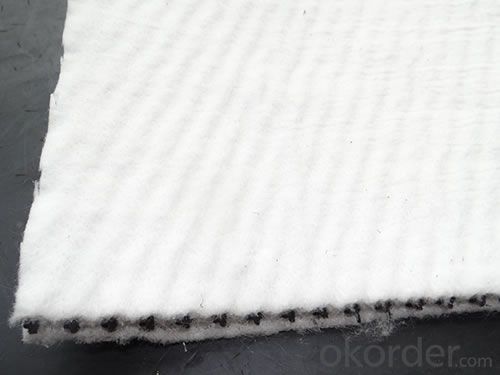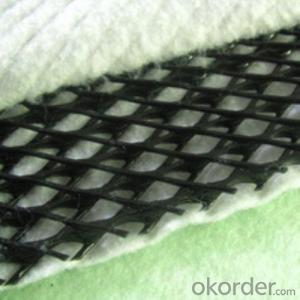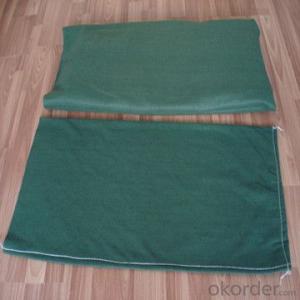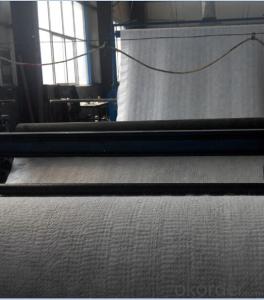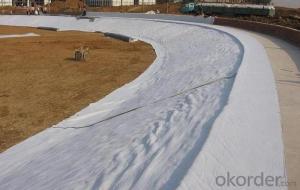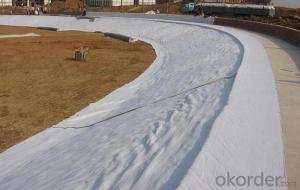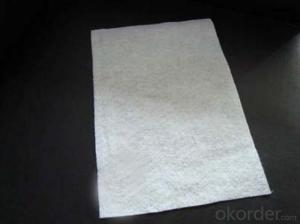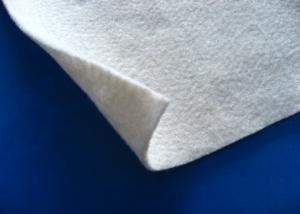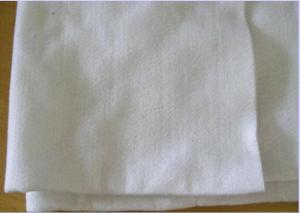Feutre Geotextile Jardin - Geotextile Bonded Drainage Network with CE Certification
- Loading Port:
- Qingdao
- Payment Terms:
- TT OR LC
- Min Order Qty:
- 10000 pc
- Supply Capability:
- 500000 pc/month
OKorder Service Pledge
OKorder Financial Service
You Might Also Like
Description Of Geotextile Bonded Drainage Network
Three-dimension composite drainage network is made of a unique three-dimension geonet bonded geotextile on both sides. It has properties of both geotextile (filtration function) and geonet (drainage and protection) and provides a whole function system “filtration-drainage-protection”.
The net core with its unique three-dimension structure can bear high compression load in construction and keep certain thickness, providing good hydraulic conductivity.
Main Features of Geotextile Bonded Drainage Network
1. Excellent drainage function, able to bear long time high pressure load
2. High tensile and shear strength
3. Able to protect its long time and stable hydraulic conductivity
4. Able to bear more than 2000kpa compression load, its anti-pressure capacity much higher than common drainage network
5. Corrosion resistant, acid and alkali resistant.
Specifications of Geotextile Bonded Drainage Network
| Drainage network core | Specification | ||||
| Unit Weight(g/m2) | 750 | 1000 | 1300 | 1600 | 1800 |
| Thickness(OV=20pa, mm) | 5.0 | 6.0 | 7.0 | 7.6 | 8.0 |
| Hydraulic Conductivity(m/s) | K×10-4 | K×10-4 | K×10-3 | K×10-3 | K×10-3 |
| Elongation Rate(%) | < 50 | ||||
| Tensile Strength(core network, KN/m) | 8 | 10 | 12 | 13 | 14 |
| Geotextiles(g/m2) | 200-200 | ||||
Geotextile Bonded Drainage Network Images
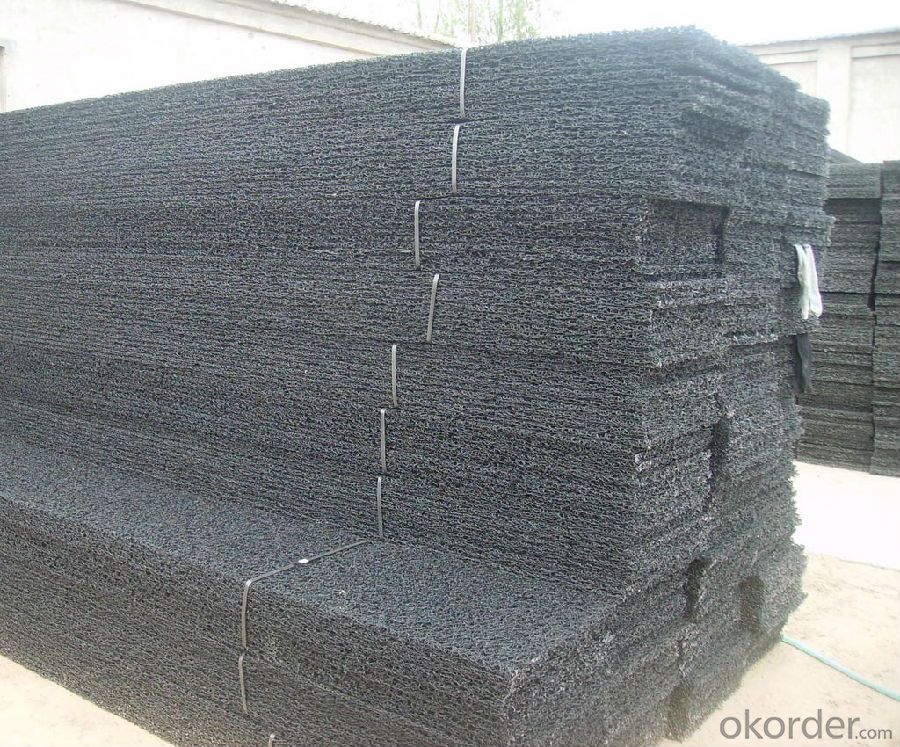

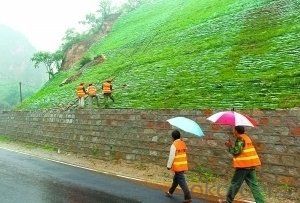
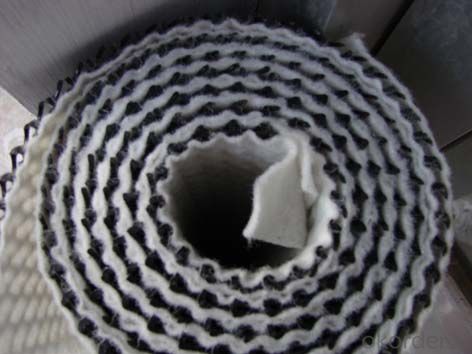
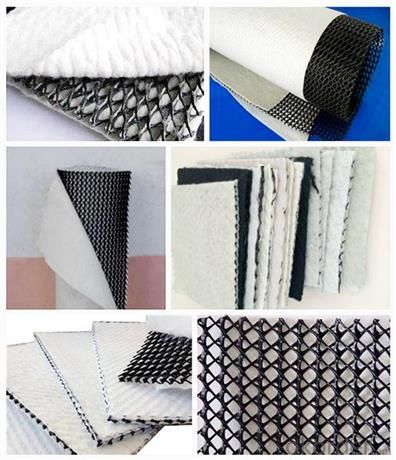
FAQ
1. Do you supply free samples for customers?
Yes,we will supply free samples for you.Please send your address for us.
2. How Many years experience do you have?
We have been exported to more than 20 countries in the past 15 years.
3. How long do we usually reply your request?
We always reply our customer within 24 hours.
- Q: Can geotextiles be used in pond liners?
- Yes, geotextiles can be used in pond liners. Geotextiles are often used as a protective layer in pond liners to provide additional strength, durability, and resistance to punctures or tears. They help prevent the migration of soil particles and provide stability to the liner, making them a suitable choice for pond construction.
- Q: Can geotextiles be used in geosynthetic clay liner applications?
- Yes, geotextiles can be used in geosynthetic clay liner applications. Geotextiles are often used as a protective layer or separator over the geosynthetic clay liner to prevent clogging and enhance the overall performance of the liner system.
- Q: Are high geotextiles harmful to people?
- High-tech geotextile is not harmful to people. High-iron geotextile for strong, tensile, anti-friction coefficient, anti-oxidation time and other indicators are very strict, it can be said that geotextile applications so far the highest requirements. The raw materials for the production of geotextile are polypropylene fiber, polypropylene fiber civilian use: can be pure or wool, cotton or viscose blended mixed woven to produce a variety of clothing. Can be used for weaving all kinds of knitwear such as socks, gloves, sweaters, knitted pants, dish cloth, mosquito cloth, was expo, warm filler, diaper wet. Industrial use: geotextile, industrial filter cloth, carpet, fishing nets, canvas, hose, concrete reinforced materials, industrial fabrics, nonwovens and so on. So do not worry, high-speed rail geotextile with environmental requirements, no harm to the human body.
- Q: Can geotextiles be used in landscaping?
- Yes, geotextiles can be used in landscaping. They are commonly used in various landscaping applications such as weed control, erosion control, ground stabilization, and separation of different soil layers. Geotextiles help to improve the overall performance and durability of landscaped areas.
- Q: How do geotextiles help with erosion control?
- Geotextiles help with erosion control by providing a protective barrier against soil erosion. They are designed to be permeable, allowing water to pass through while preventing the loss of soil particles. Geotextiles also stabilize soil by increasing its strength and preventing it from being carried away by wind or water. Additionally, these materials promote vegetation growth by retaining moisture and nutrients, further enhancing erosion control efforts.
- Q: How do geotextiles contribute to slope stability analysis?
- Geotextiles contribute to slope stability analysis by providing reinforcement and stabilization to the slope surface. These synthetic materials act as a barrier against erosion, soil movement, and water infiltration, reducing the risk of slope failure. By enhancing the shear strength and internal stability of the slope, geotextiles help in evaluating the stability of slopes and designing appropriate measures to mitigate potential hazards.
- Q: What are the advantages of using geotextiles in green building design?
- Geotextiles offer numerous advantages in green building design. Firstly, they provide effective erosion control by stabilizing soil, preventing sediment runoff, and reducing the need for traditional erosion control measures. Additionally, geotextiles enhance water filtration and drainage, promoting healthier soil and preventing waterlogging. These materials also aid in weed control, reducing the need for herbicides and minimizing maintenance efforts. Moreover, geotextiles can improve the structural integrity of green building projects by reinforcing soil and preventing subsidence. Lastly, they offer a sustainable solution as they are typically made from recycled materials and can be reused or recycled themselves.
- Q: What are the specifications for geotextiles in civil engineering projects?
- Geotextiles used in civil engineering projects have specific specifications that include factors such as weight, tensile strength, permeability, and durability. The weight of the geotextile is typically measured in grams per square meter (gsm) and can vary depending on the specific application. Tensile strength refers to the material's ability to resist breaking under tension and is measured in units like kilonewtons per meter (kN/m). Permeability is a crucial factor, as geotextiles should allow water to pass through while preventing the movement of soil particles. Lastly, durability is essential to ensure the geotextile can withstand the environmental conditions it will be exposed to, such as UV exposure or chemical resistance.
- Q: Does the geotextile filter cover the geotextile? Or impermeable geotextile?
- Geotextile has the role of anti-filter reinforcement, can not seepage, seepage is geomembrane, composite geotextile is also called composite geomembrane
- Q: Which big god has the relevant documents? bow down!
- Mainly from the anti-seepage, to prevent the role of soil erosion, I am specializing in the production of geotextiles, wish smooth
Send your message to us
Feutre Geotextile Jardin - Geotextile Bonded Drainage Network with CE Certification
- Loading Port:
- Qingdao
- Payment Terms:
- TT OR LC
- Min Order Qty:
- 10000 pc
- Supply Capability:
- 500000 pc/month
OKorder Service Pledge
OKorder Financial Service
Similar products
Hot products
Hot Searches
Related keywords
